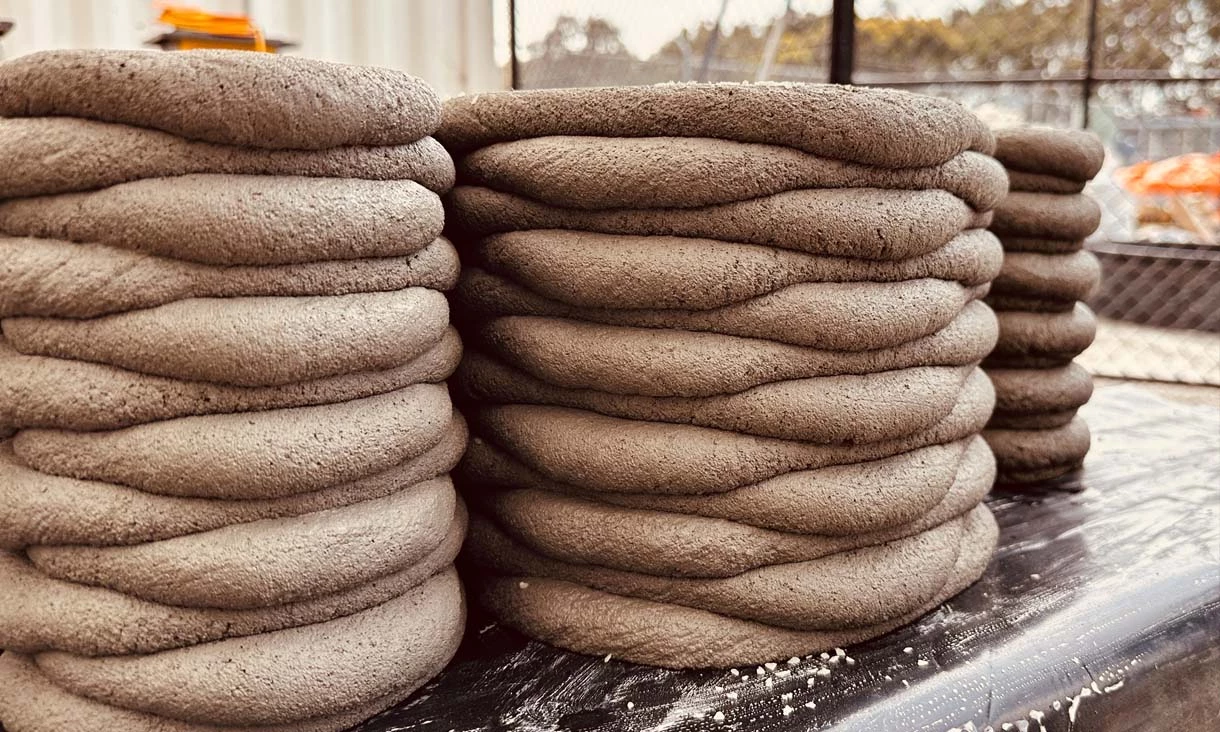3D-printed concrete structures are claimed to be faster and cheaper to build than their traditional counterparts, but they're not always as strong. That problem may soon be solved by adding a pinch of graphene oxide, which could also be used to detect cracks.
Ordinarily, concrete buildings, bridges and other structures are made by pouring wet concrete into wooden molds (aka forms) which are removed once the concrete has hardened.
By contrast, the 3D printing of such structures involves depositing successive layers of extruded concrete which bond together as they harden. Unfortunately, the bonds between those layers sometimes end up being weak points, decreasing the overall strength of the structure.
In an effort to solve that problem, scientists from Australia's RMIT University and University of Melbourne tried adding graphene oxide to the cement used as a binder in 3D-printed concrete. Graphene oxide is the oxidized form of graphene, which is in turn a one-atom-thick sheet of carbon atoms linked together in a honeycomb pattern.
After experimenting with different amounts, it was found that when graphene oxide was added at a dosage of 0.015% the weight of the cement, the resulting concrete exhibited better inter-layer bonding. This boost produced a 10% increase in overall strength.
"Graphene oxide has functional groups on its surface, which are like sticky spots on the surface of a material that can grab onto other things," said RMIT's Assoc. Prof. Jonathan Tran. "These 'sticky spots' are mainly made of various functional groups containing oxygen, which play a crucial role in facilitating its stronger bonds with other materials like cement. This strong bonding can improve the overall strength of the concrete."

As an added bonus, because graphene is highly electrically conductive, it's possible to pass an electrical current through the hardened concrete. It is hoped that this functionality could one day be utilized in a crack-detection system, wherein even the smallest of cracks would interrupt an electrical circuit running through a concrete structure.
More research still needs to be conducted on that front, plus the scientists have yet to determine how the strength of the augmented 3D-printed concrete compares to that of traditional cast concrete. A paper on the study, which was led by RMIT PhD candidate Junli Liu, was recently published in the journal Additive Manufacturing Letters.
In previous studies, graphene oxide has been used to form a protective coating on concrete, and to increase the bonding strength of shredded face mask fibers which were used to strengthen concrete.
Source: RMIT University




